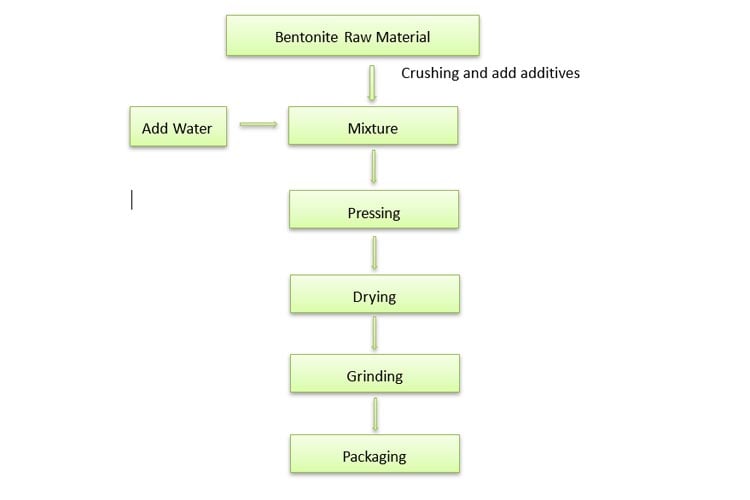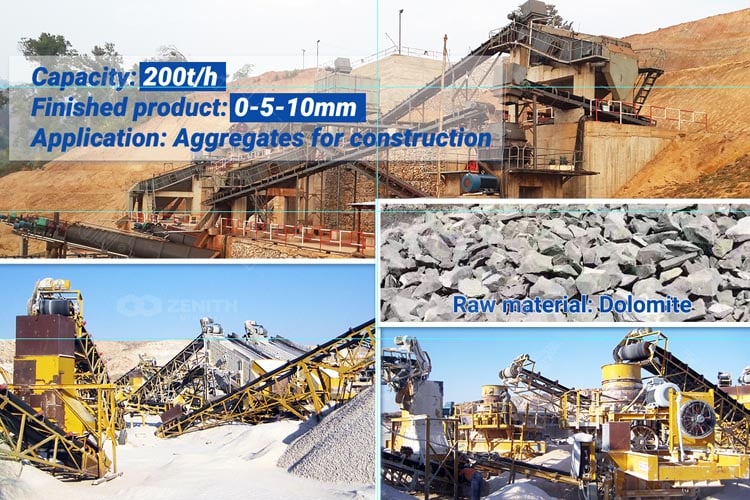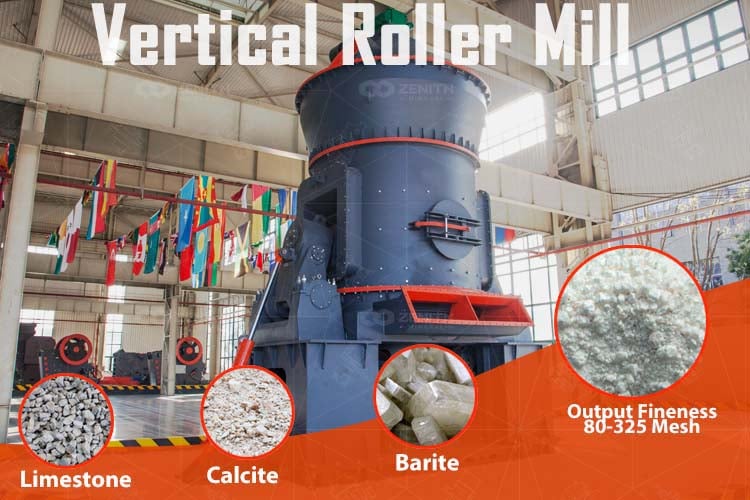Cement industry plays important role in global economy development. The current world consumption of cement is about 1.5 billion tonnes per annum and it is increasing at about 1% per annum. The electrical energy consumed in cement production is approximately 110 kWh/tonne, and around 40% of this energy is consumed for clinker grinding.

In modern time, the dry grinding circuits for the production of finished cement from cement clinker consist of two-compartment tube mills and the air separators. It is not uncommon to produce the cement in an open circuit. The throughput of current conventional closed grinding circuit can be increased by 10-20% by pre-crushing the clinker using the ZENITH crusher.
Advances in cement grinding technology is slow and these advances are limited to more developed countries. Approximately 95% of the feed to the cement grinding circuit are clinker and the rest of the feed are “additives” which includes grinding aids.
Cement is a fine powder, gray or white in color, that consists of a mixture of hydraulic cement materials comprising primarily calcium silicates, aluminates and aluminoferrites. More than 30 raw materials are known to be used in the manufacture of portland cement, and these materials can be divided into four distinct categories: calcareous, siliceous, argillaceous, and ferrifrous.
The initial production step in portland cement manufacturing is raw materials acquisition. Typically, these raw materials are obtained from open pit quarries, but underground mines or dredging operations are also used. The second step in portland cement manufacture is preparing the raw materials by crushing and grinding applications, or kiln feed, for the pyroprocessing operation.
The major raw materials required for the production of cement are limestone, clay, sandstone, gypsum and pumice. These raw materials are proportionally mixed at different stages of the production process inorder to produce an intermediate product called clinker and final product of cement.
Cement production process is a relatively complex process, it typically involves several stages:
grinding limestone (and other raw materials to achieve the right chemical composition) to about 90% passing 90 microns in a dry circuit,
making cement by the chemical reaction between the components of the ground mixture. This chemical reaction occurs at high temperature in a rotary kiln,
grinding the cement clinker nodules to 100% passing 90 microns in a dry circuit.
There are many different types of machinery involved in cement manufacturing applications. ZENITH is the poineer in cement grinding and production technology and global cement manufacturing machinery supplier. We design and manufacture a comprehensive line of cement manufacturing machinery for both wet and dry applications. We offer a complete range of engineering services, including testing, process design, installation, commissioning, start-up, and continuous lifetime product support services. Most of the machinery required by a cement manufacturing plant are huge and heavy - duty type. This is mainly due to the nature of the mineral inputs used in the production.
Crushing plant for raw materials: jaw crusher, gyratory crusher, impact crusher, cone crusher etc.
Cement grinding mill: Grinding occurs at the beginning and the end of the cement making process. Grinding mill is the important machinery in cement production line. The main grinding mill used in cement production includes ball mill, vertical roller mill, ultrafine mill, raymond mill, trapezium mill etc.

In bentonite processing plant, the production of bentonite mainly takes natural bentonite as raw material, and obtains corresponding products that meet the requirements by using purification, modification, activation, modification and other technologies. Here, purification and modification are mainly involved.

dolomite processing plant can be divided into dolomite crushing and sand making plant and dolomite grinding plant.

A complete calcium carbonate processing plant mainly consist the following 4 steps:plastic industry, rubber industry, coating industry, paper industry.
Fill your requirements here, and we'll send the custmized solution and quotation to you by the reserved contact information.